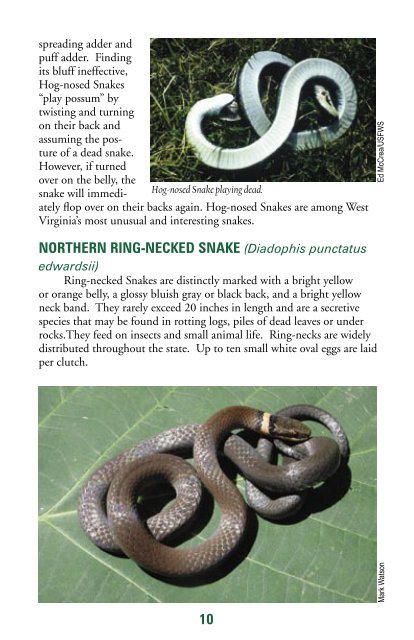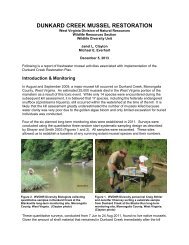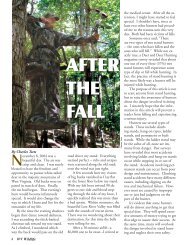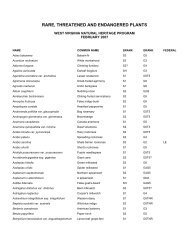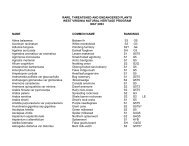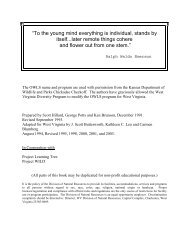Snakes - West Virginia Division of Natural Resources
Snakes - West Virginia Division of Natural Resources
Snakes - West Virginia Division of Natural Resources
Create successful ePaper yourself
Turn your PDF publications into a flip-book with our unique Google optimized e-Paper software.
spreading adder and<br />
puff adder. Finding<br />
its bluff ineffective,<br />
Hog-nosed <strong>Snakes</strong><br />
“play possum” by<br />
twisting and turning<br />
on their back and<br />
assuming the posture<br />
<strong>of</strong> a dead snake.<br />
However, if turned<br />
over on the belly, the<br />
snake will immedi- Hog-nosed Snake playing dead.<br />
ately flop over on their backs again. Hog-nosed <strong>Snakes</strong> are among <strong>West</strong><br />
<strong>Virginia</strong>’s most unusual and interesting snakes.<br />
NORTHERN RING-NECKED SNAKE (Diadophis punctatus<br />
edwardsii)<br />
Ring-necked <strong>Snakes</strong> are distinctly marked with a bright yellow<br />
or orange belly, a glossy bluish gray or black back, and a bright yellow<br />
neck band. They rarely exceed 20 inches in length and are a secretive<br />
species that may be found in rotting logs, piles <strong>of</strong> dead leaves or under<br />
rocks.They feed on insects and small animal life. Ring-necks are widely<br />
distributed throughout the state. Up to ten small white oval eggs are laid<br />
per clutch.<br />
10<br />
Ed McCrea/USFWS<br />
Mark Watson


